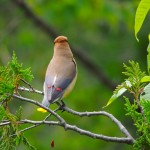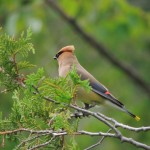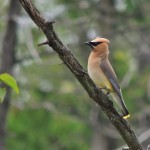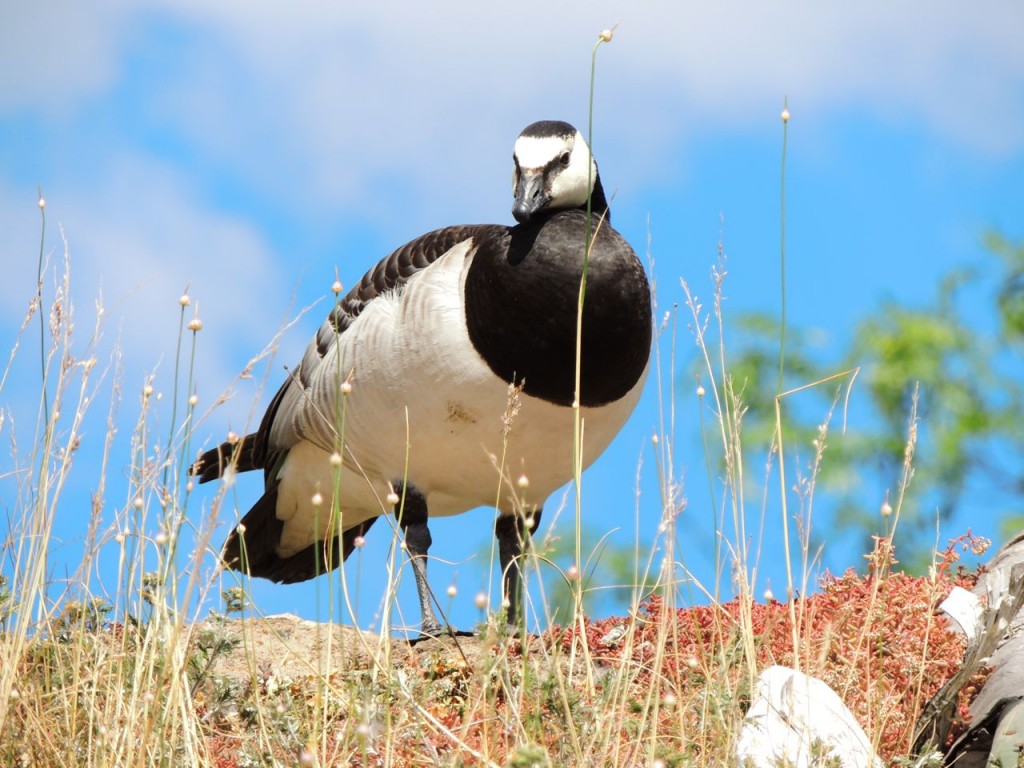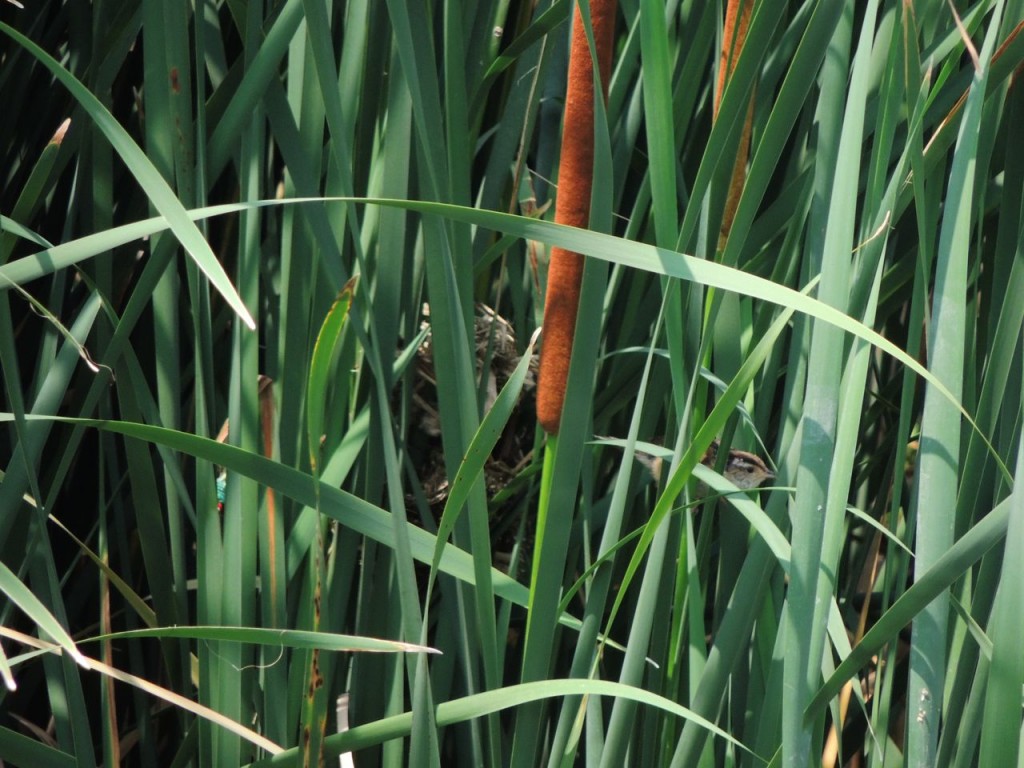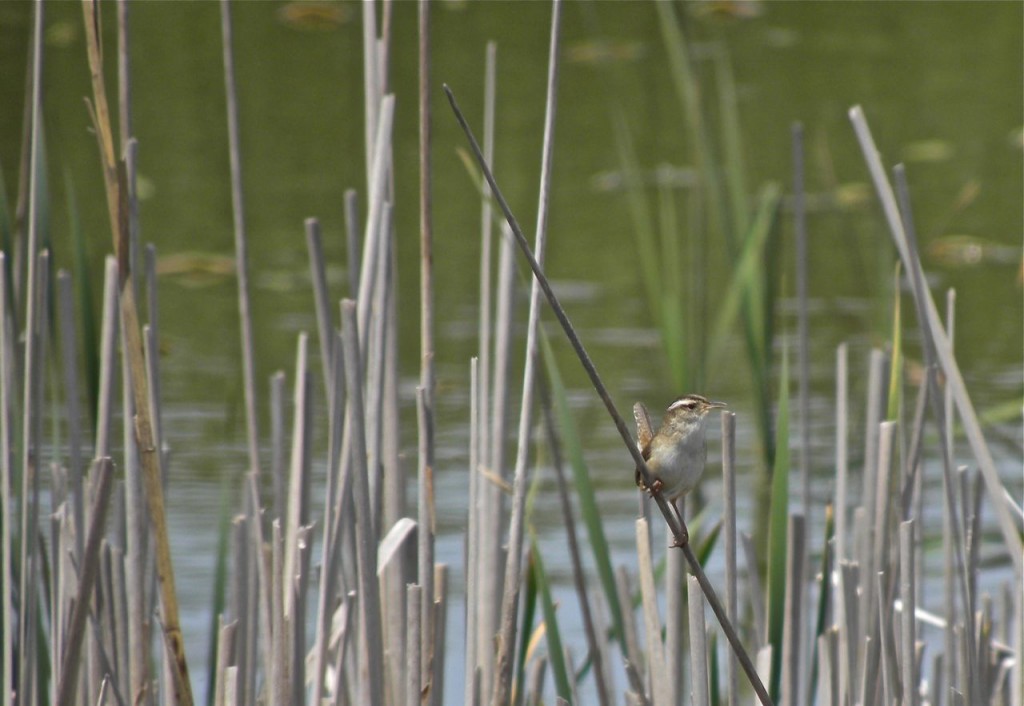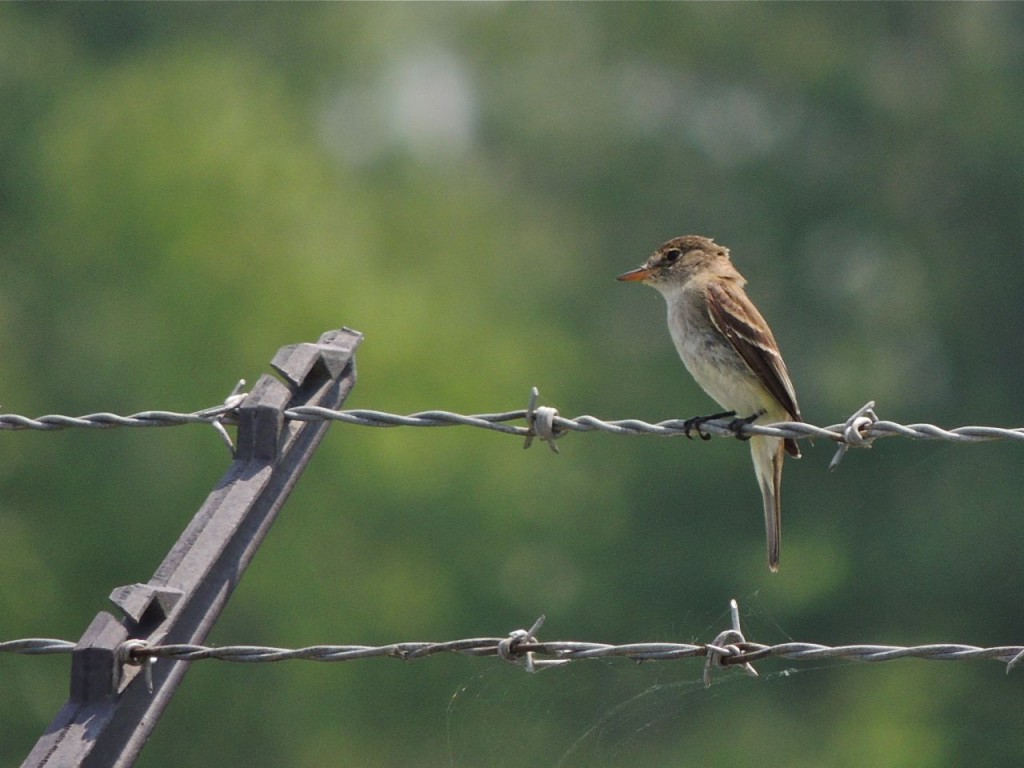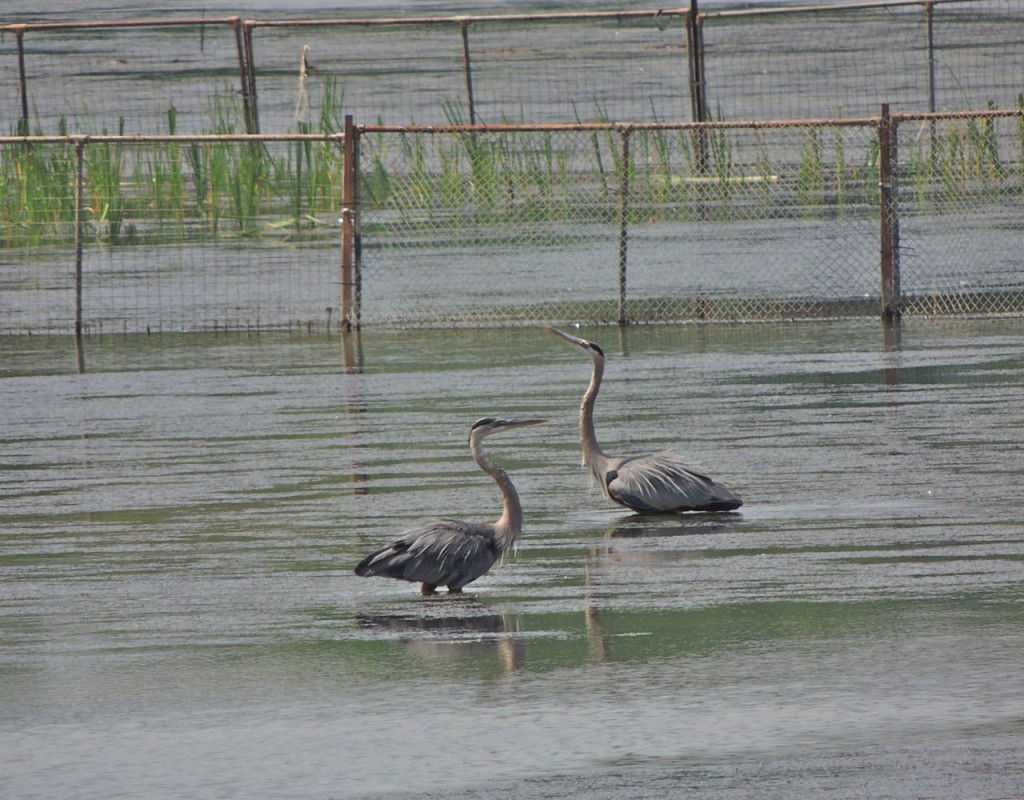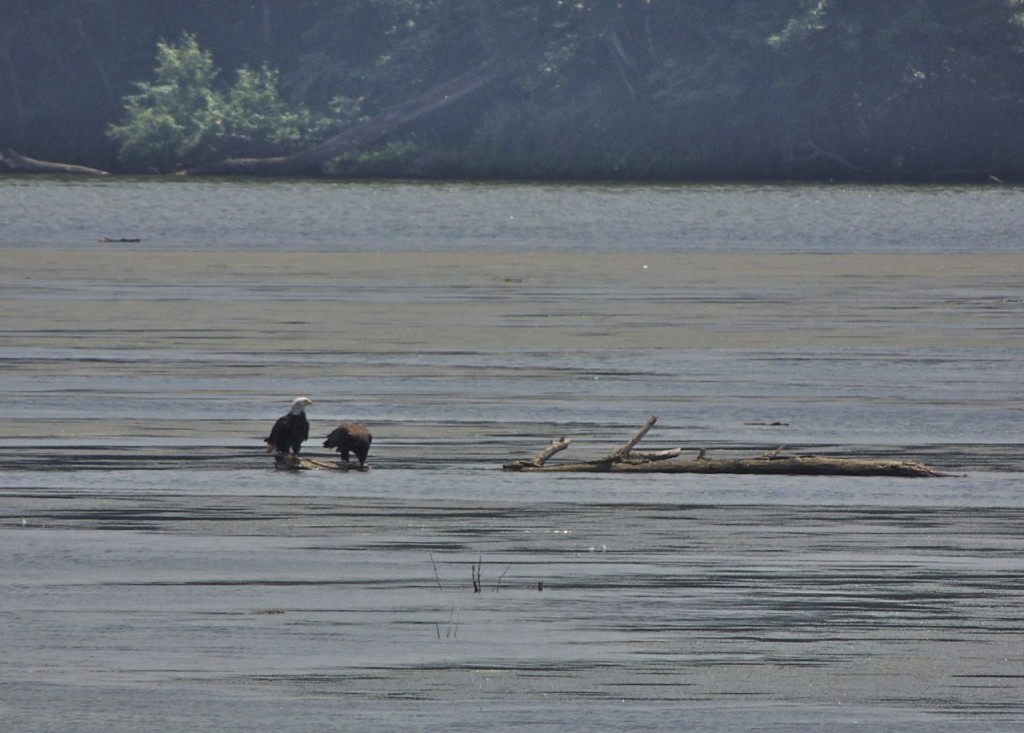29 July 2014 Flamborough, ON. This is a tale of twenty-eight species, four birding spots and three contenders as Bird of the Day: Vesper Sparrow, Virginia Rail and Cedar Waxwing. It came about when, rather than squander a beautiful day tidying or cleaning, I decided to visit a couple of favourite birding spots, just to see what’s up at this lazy. mid summer point. It’s a quiet time of year and I didn’t expect a great deal but was quite satisfied with a handful of good sightings, including three wow! birds.
At my first stop, a stretch of steep, unmaintained gravel road that cuts through farmland and woods, I heard a Vesper Sparrow singing, it confirmed my suspicion that I’d heard them at this same place last year. Vesper Sparrows are a bit of a nemesis bird for me. Why that should be is a dull story of neglect, but hearing one today was helpful. What I’d like is a lingering encounter with one, just it and me, complete with eye contact and perhaps some song (from it – not me); something that’s eluded me so far. The bird is so called because of its sweet, exuberant song (listen to sample here ) which often continues into the twilight after other birds have fallen silent.
Continuing along this same road there were no species that I’d call unexpected. My tally included Eastern Kingbirds, Red-eyed Vireos and this beautiful little Common Yellowthroat. I believe this to be a young (hatched this year) male. Hard to see in this photo, but visible at the time, there’s a trace of black tips to some of the feathers below the eyes, a hint of the black Lone Ranger mask that it will wear next spring, like the male in the lower photo, taken in June 2012.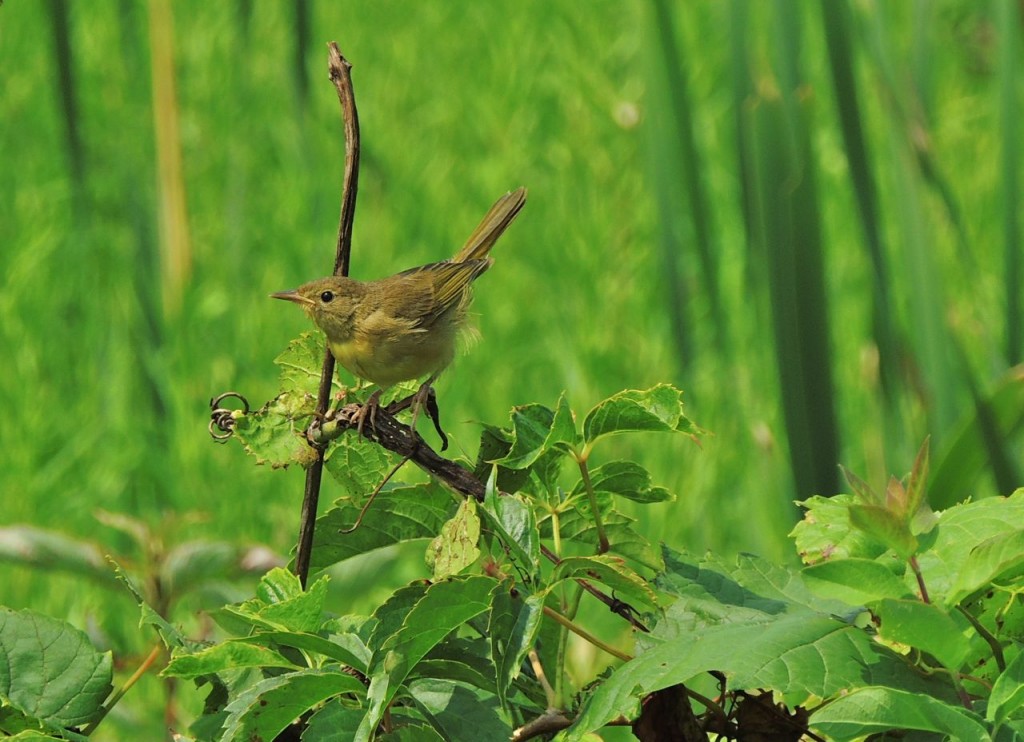
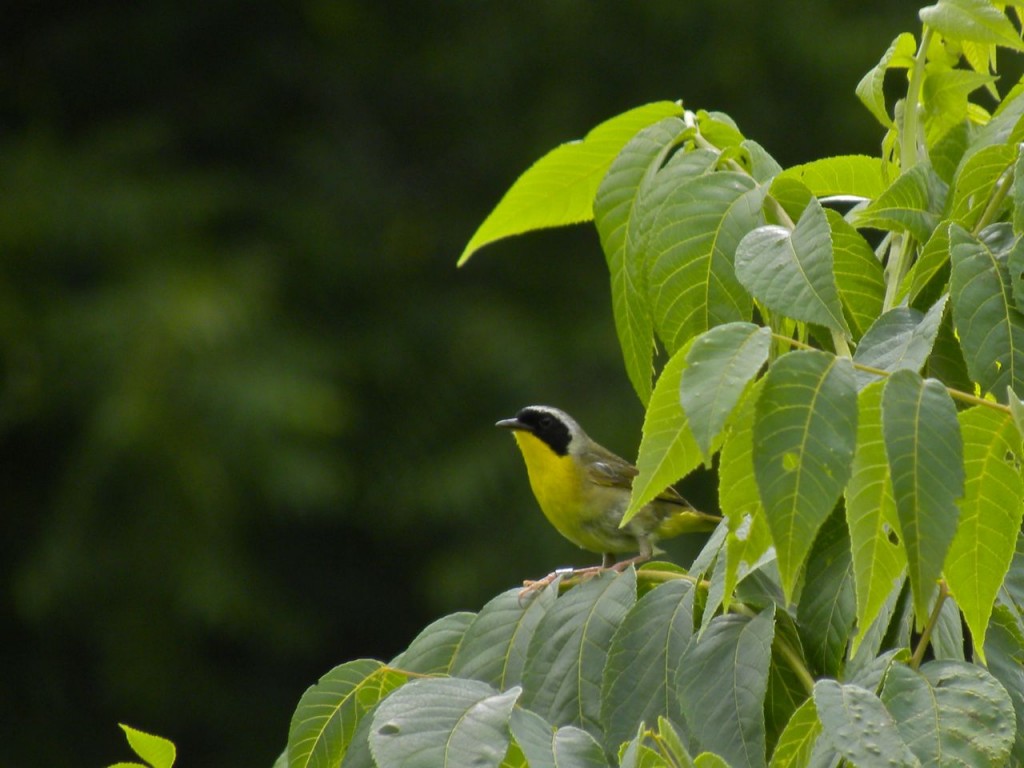
The second stop could have been more fun, but a couple of Black Labrador Retrievers bounding around didn’t help, so I moved on to an expansive marsh bisected by a wooden boardwalk. As soon as I arrived I could hear the clicking contact notes of perhaps four or five Virginia Rails coming from deep in the cattails and grasses. I described the notes as clicking, but its more like somewhere between a squeal and a click, often described as a sharp “Kidick”. If you spent your days where Virginia Rails do, you’d need a good reliable contact note too. They pass their time poking around at water level and squeezing through stalks of aquatic grasses and cattails. It can be very difficult to see them unless one happens to wander out into the open, which none of mine did today, but I was able to follow the progress of one by following moving grass stalks. I can report that I actually did see part of it for a moment but it was excruciatingly difficult and I often found myself staring hard at nothing at all.
I wrapped up my day exploring a rather wondrous chain of small lakes in a quiet wooded valley. The air was full of flying insects, which had caught the attention of feeding Barn Swallows, Northern Rough-winged Swallow, a Chimney Swift, many Eastern Kingbirds and Cedar Waxwings. The two swallow species were turning and chasing in fast, wide loops, while the swift soared, more stiff-winged in flight, much higher above. The kingbirds and waxwings worked from strategic perches, sallying out to snap up too-slow flies, before returning to another suitable lookout. Three of the Cedar Waxwings were quite unconcerned by my presence, staying quite close and gracing me with their company; their flawless silk-smooth, olive-to-chestnut plumage and black face mask is really quite glorious. This series below features a splendid male at the peak of its condition. The black chin distinguishes it from the brown of a female and the little red spots on its wing are actually blobs of wax, which, it is supposed, are status symbols that play a role in mate selection. This bird is showing six (maybe seven) wax tips per wing, although as many as nine is possible, one per secondary flight feather. It’s easy to imagine how easily a female Cedar Waxwing would surrender at the sight of those red waxy bits.
(This Cedar Waxwing gallery is visible only on the website, not if you’re reading this as an email.)
Twenty-eight species, four birding spots and three Birds of the Day: Vesper Sparrow for being there and singing for me, Virginia Rails for letting me know they were there and teasing me with just one fleeting peek, and Cedar Waxwings for their elegant, silky, wax-adorned plumage.
